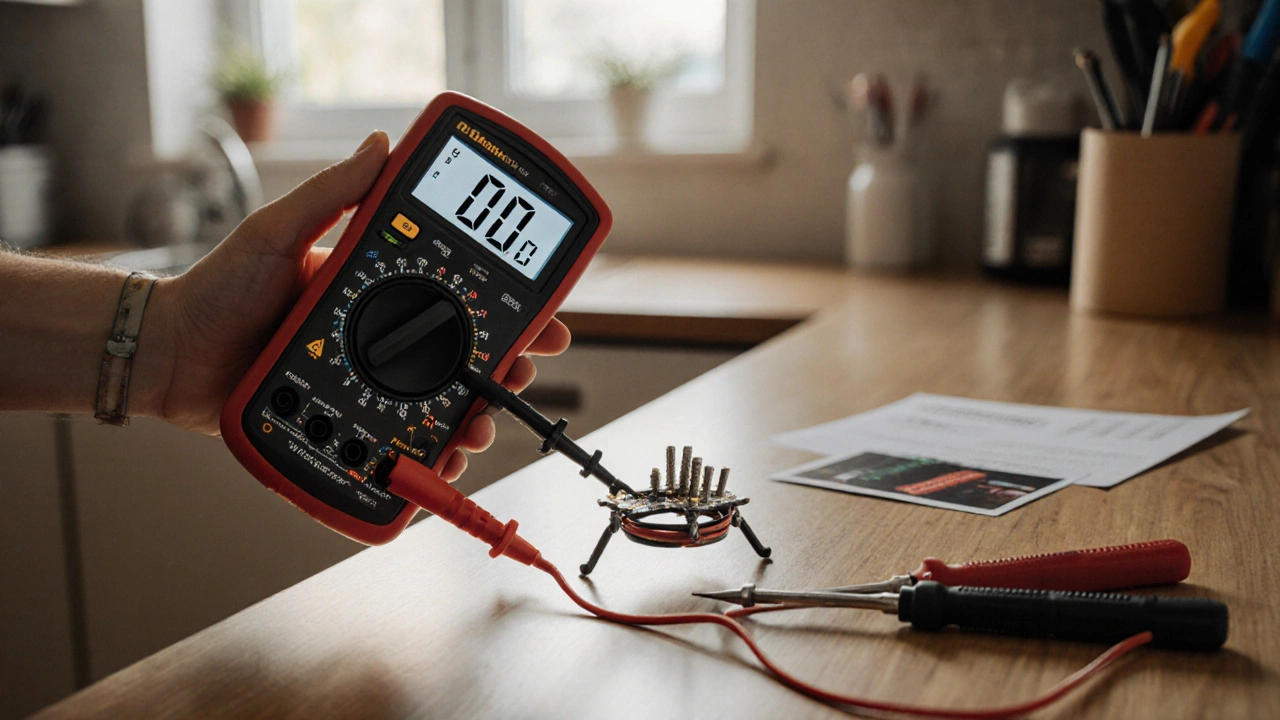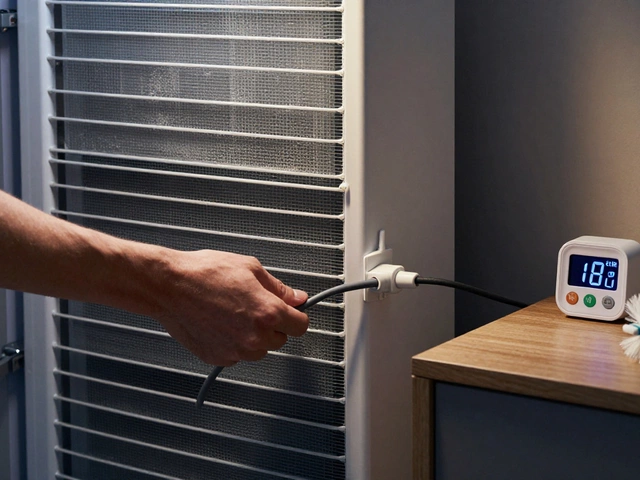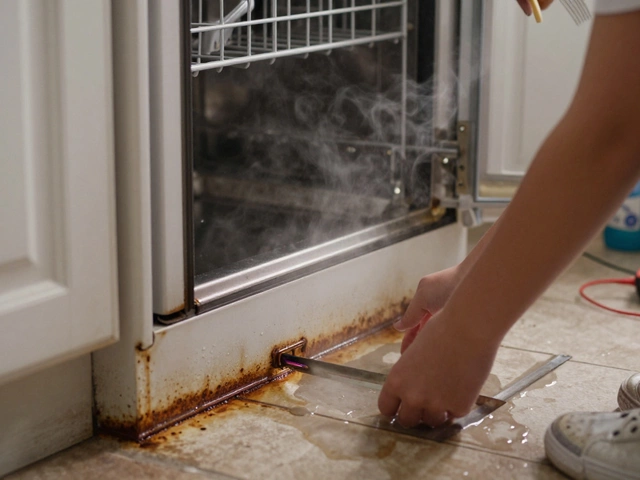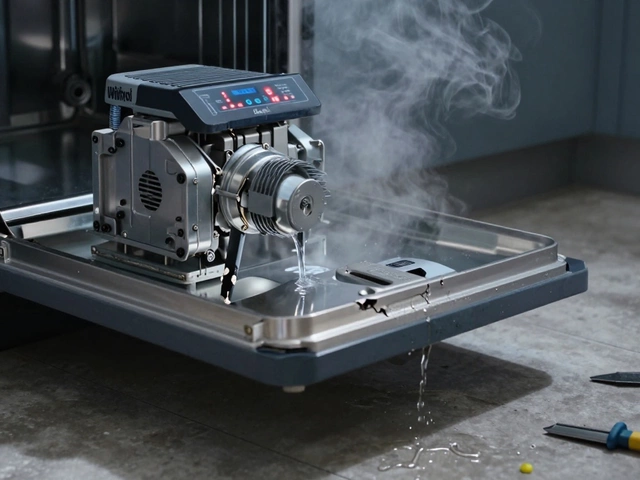Oven Element Diagnostic Tool
Step 1: Check for visible damage
Inspect the heating element while the oven is turned off.
Step 2: Test glow pattern
Watch the element when baking at 350°F for 10-15 minutes (door closed).
Step 3: Check heating performance
Does your oven heat properly for baking?
Step 4: Multimeter test (Optional)
Check element resistance (ohms) when disconnected.
If your oven isn’t heating up, or it’s taking forever to preheat, chances are your heating element is the culprit. It’s one of the most common oven problems - and often the easiest to fix. You don’t need to be a technician to figure out if it’s broken. With a few simple checks, you can tell whether it’s time to replace the element or if something else is wrong.
Look for visible damage
Start by turning off the power to your oven at the circuit breaker. Safety first. Once it’s off, open the oven door and take a close look at the heating element - that’s the metal coil at the top and bottom of the oven cavity. The bottom element does most of the work during baking, while the top one is mainly for broiling.A working element should look clean and uniform. If you see any of these signs, it’s likely broken:
- Blistered, cracked, or bubbled sections
- Dark spots or areas that look burned out
- One side of the coil is glowing red while the other stays dark
- Physical gaps or breaks in the metal
Even a small crack can stop electricity from flowing through the element. If you spot any of this damage, the element is dead. No need to test further.
Test if the element glows when the oven is on
If the element looks okay, turn the power back on and set the oven to bake at 350°F. Wait 10 to 15 minutes. Keep the door closed but watch through the window.Both the top and bottom elements should glow bright orange-red when they’re working. If the bottom element stays dark while the oven is in bake mode, it’s not getting power - and it’s probably broken. The top element might glow during broil mode, but if it doesn’t light up during baking, that’s your problem.
Some ovens cycle elements on and off to maintain temperature. Don’t assume it’s broken if it turns off after a few minutes. But if it never turns on at all, or only glows in patches, it’s faulty.
Check if your oven heats unevenly
A failing element doesn’t always stop working completely. Sometimes it weakens over time. You might notice:- Baking takes twice as long as it used to
- Food cooks unevenly - burnt on one side, raw on the other
- Bottom of bread or pizza doesn’t brown, even after 30 minutes
This is a classic sign of a dying element. The coil still conducts some electricity, but not enough to heat properly. It’s like a lightbulb that flickers before it dies - you can still see some light, but it’s not useful.
Try this test: bake a tray of cookies. If they’re pale on the bottom but brown on top, the bottom element isn’t doing its job. Same goes for roasting chicken - if the skin browns but the meat stays undercooked inside, the element is struggling.

Use a multimeter to test continuity
If you’re comfortable using a multimeter, you can confirm whether the element has a break in the circuit. This is the most accurate way to know for sure.First, unplug the oven or shut off the breaker. Remove the element by unscrewing the mounting screws and disconnecting the wires. Label the wires so you know where they go when you reinstall.
Set your multimeter to the ohms (Ω) setting. Touch one probe to each terminal on the element. A good element should read between 20 and 120 ohms, depending on the model. If you get a reading of 0 (no resistance) or “OL” (open loop), the element is broken.
Some people test the element while it’s still in the oven. That won’t work. You need direct access to the terminals. If you’re unsure how to use a multimeter, watch a quick YouTube video on testing oven elements - it takes less than 5 minutes.
Rule out other problems
Before you buy a new element, make sure it’s not something else. Other common causes of no heat include:- Thermostat failure - if it’s not sensing the right temperature, it won’t turn the element on
- Faulty oven control board - this sends power to the element; if it’s fried, nothing works
- Broken bake relay - a small switch inside the control board that activates the element
- Tripped thermal fuse - a safety device that cuts power if the oven overheats
These are harder to diagnose without tools. But if your element tests fine and still doesn’t heat, you might be dealing with one of these. If you’ve checked the element and it’s good, and the oven still doesn’t heat, it’s time to call a technician.
How long do oven elements last?
Most oven heating elements last between 5 and 10 years. If your oven is older than 8 years and the element is failing, it’s not unusual. Heavy use - like baking every day or broiling frequently - can shorten that lifespan.Signs your element is nearing the end of its life:
- It takes longer to heat up
- It makes a faint buzzing sound before turning on
- You’ve replaced it once before
Elements don’t usually fail suddenly. They fade. If you’ve noticed slow heating over the past year, it’s not a surprise when it finally stops.
What to do if the element is broken
Replacing a heating element is a DIY job for most homeowners. You don’t need special tools - just a screwdriver and maybe a wrench. New elements cost between $25 and $60, depending on your oven brand.Here’s how to replace it:
- Turn off power at the breaker.
- Remove the screws holding the element in place.
- Disconnect the wires (take a photo first).
- Take the old element to a hardware store or order a replacement online using your oven’s model number.
- Connect the new element the same way the old one was wired.
- Secure it with screws and turn the power back on.
Test it by setting the oven to bake. If it glows evenly and heats up in 10-15 minutes, you’re done.
Why you shouldn’t ignore a broken element
A broken element isn’t just inconvenient - it can be dangerous. If the element is cracked or damaged, it might arc or spark inside the oven. That can damage the wiring or even start a fire. Even if it’s just not heating, the oven might keep trying to turn it on, which stresses the control board and could lead to more expensive repairs.Fixing it early saves money. Replacing an element costs less than $100. Replacing the whole oven? That’s $500 to $1,500.
Can I use my oven if the top element is broken?
Yes, you can still bake using the bottom element - as long as it’s working. The top element is mainly for broiling. If you don’t broil often, you can get by without it. But if you’re trying to bake and the bottom element is broken too, the oven won’t heat properly.
Why does my oven element glow in some spots but not others?
That’s a sign the element is failing. The metal has weakened in certain areas, so electricity can’t flow evenly. It’s like a frayed wire - only parts of it still conduct. This usually means the element is near the end of its life and should be replaced soon.
Is it cheaper to repair or replace the oven?
If your oven is under 10 years old and otherwise works well, replacing the element is almost always the cheaper choice. A new element costs $25-$60, plus maybe $100 if you hire someone. A new oven starts at $500. If your oven is 12+ years old and has other issues (like a failing control panel), replacement might make more sense.
Can a power surge break an oven element?
Yes. A sudden spike in voltage - from lightning, faulty wiring, or a power grid issue - can overload and burn out the element. If your element failed right after a storm or power flicker, that’s likely the cause. Installing a surge protector for major appliances can help prevent this.
Do all ovens have two heating elements?
Most standard electric ovens have two: one at the bottom for baking and one at the top for broiling. Some compact or older models may only have a bottom element. Convection ovens add a fan, but still use both elements. If your oven only has one element and it’s broken, you’ll need to replace that one.
Next steps if your element is broken
If you’ve confirmed the element is dead, order a replacement right away. Use your oven’s model number to find the exact part. You can find it on a label inside the oven door or on the back panel. Don’t guess - using the wrong element can damage your oven or cause a fire.Once you have the new part, replace it within a few days. Don’t wait. The longer you go without a working oven, the more you risk spoiled food, missed meals, or worse - a secondary failure in the control system.
And if you’re not sure about any step - especially wiring or using a multimeter - call a professional. It’s not worth the risk. But for most people, replacing an oven element is a simple fix that brings your oven back to life.





